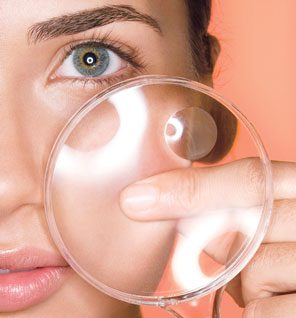The chronic skin condition, categorized as inflammation of the cheeks, nose, chin, forehead or eyelids, may appear as redness, prominent spiderlike blood vessels, swelling or skin eruptions similar to acne. Rosacea can strike at any time, but is most likely to surface around age 30.
While there's no cure for rosacea, the good news is you can manage and even eliminate redness and irritation with the right combination of prevention, treatment and protection.
Prevention: For those prone to rosacea, a few simple lifestyle changes can yield noticeable results. Alcohol, caffeine and spicy foods are all charged with aggravating rosacea, as well as steam and extreme temperatures on both ends of the thermometer. Start by eliminating one aggressor at a time so you can clearly pinpoint how each change affects your skin. Luckily, everyone has different triggers so chances are you won't need to abstain from the entire list.
Treatment: Since there isn't a cure for rosacea, I always remind my patients that, while I can successfully treat symptoms (ruddiness, broken blood vessels and bumps), I can't eliminate the condition all together. Improving the overall quality of skin, however, is a great way to reduce the problems associated with rosacea. The best treatment for rosacea is a program of skin care creams that will strengthen skin, unclog the pores and enable skin to renew itself. That's why I recommend a skin-strengthening product such as ZO Skin Health's Radical Night Repair. It increases cell turnover, which forces the damaged surface cells to slough off, allowing the new healthy cells to emerge.
